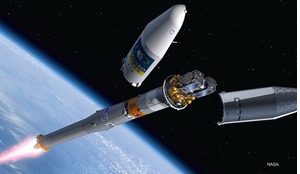Viewed from space, planet Earth is blue. With 70 percent of Earth’s surface covered by oceans, perhaps this should come as no surprise. But oceans aren’t always blue - their colour varies considerably depending on the living organisms that harness the power of the Sun near the ocean surface. Ocean colour Earth observations are now an important source of information and the data from the Copernicus Sentinel-3 satellite is providing valuable evidence for global coastal management, policy making, Earth system science and monitoring climate change.
Оceans are vital for the existence of life on Earth and for the wellbeing of Earth’s inhabitants and ecosystems alike. They power the weather systems in the atmosphere, shape the global climate and feed the world.
But these vast expanses of water aren’t always blue. Blooms of microscopic algae, otherwise called phytoplankton, spread over large expanses of the ocean and are visible because of their photosynthetic pigments, primarily chlorophyll. Regional seas, coastal zones and inland waters carry especially high algal concentrations due to the abundance of nutrients from the land. Suspended sediments from river transport and coastal erosion also change ocean colour at the coasts. Equatorial upwellings are the most prominent features in the open oceans where phytoplankton blooms spread over thousands of kilometres.
Today’s satellites are now so advanced that they can actually observe algae from space, a capability first demonstrated 40 years ago when the true extent of global living oceans was unveiled by the launch of the proof-of-concept ‘Coastal Zone Colour Scanner’ by NASA. It took another two decades for space agencies to launch global ocean colour observations. Today, the data from these observations are vital for a broad range of applications and services that monitor water quality, guide marine resource management for fisheries and aquaculture, and monitor the climate. From these data, we learned that marine phytoplankton account for about half of all photosynthetic activity on Earth and most of the oxygen we breathe.
Find out more about the Copernicus Sentinel-3 satellite and the essential data that satellites can provide us about the oceans in the full version of the article, available now to our subscribers.














